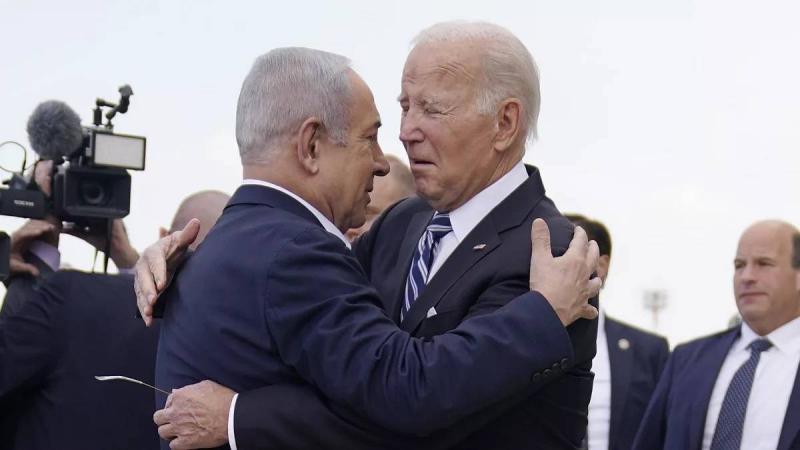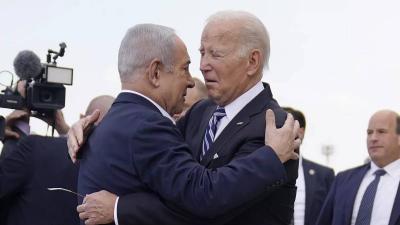Under the title "History of American-Israeli Relations," many significant events can be included that are not necessarily entirely harmonious. From the beginning in May 1948, Secretary of State George Marshall opposed recognizing the newly established Hebrew state, and much was said about a split within Harry Truman's administration. The secretary, who is associated with the famous Marshall Plan for rebuilding Europe after World War II, was strongly aligned with the British perspective of placing Palestine under United Nations mandate to prevent a major war, as in the rest of the Middle East.
Then, in 1956, President Dwight Eisenhower sided with Egypt against the "triple aggression" of Britain, France, and Israel, prioritizing U.S. interests with its traditional allies in the Arab and Islamic worlds over caring for the state of Israel. Thus, Eisenhower forced Israel to withdraw from the territories it had occupied and issued a serious warning to the British, suggesting that their invasion threatened punitive actions that would undermine the value of the pound sterling.
In 1967, a qualitative shift occurred toward full alliance and partnership between Washington and Tel Aviv. The widespread impression in the West was that Gamal Abdel Nasser, then an ally of the Soviets, was working to eradicate Israel once and for all. His expulsion of peacekeeping forces from Gaza and Sinai and his closure of maritime channels confirmed the worst fears regarding his intentions. When the Six-Day War broke out, the Lyndon Johnson administration became convinced that the Hebrew state was, in the Middle East, its only ally participating in the Cold War and even achieving, in six days, a resounding victory that changed major strategic balances.
This led to the establishment, in 1973, of what became known as the American air bridge between America and Israel, just four days after fighting erupted on October 6. This air bridge supplied the Israelis with arms and ammunition, enabling them to regain territories from which the Egyptian and Syrian armies had pushed them out, and eventually allowed them to occupy additional lands they hadn't controlled in 1967.
We know that the 1982 invasion of Lebanon also sparked serious disagreements, reflected by the tension between Philip Habib, Ronald Reagan’s envoy, and Secretary of State Alexander Haig, who soon resigned. This was also expressed in the manner in which Palestinian Liberation Organization fighters were expelled from Beirut, before the two countries competed for the paternity of Bashir Gemayel, and before their significant subsequent divergence in the negotiations that led to the Israeli-Lebanese May 17, 1983 agreement.
Of course, there is always legitimate caution in reading the present through the lens of the past. The bilateral history referenced in some of its titles involves significant transformations in the situations of the two parties concerned and in the broader international conditions, as well as the outcomes deriving from the political affiliations of the administrations, as well as the economic situations in both countries, and whether either is undergoing an electoral circumstance, as is currently the case.
Certainly, and in line with all changes, not every event that occurs is a replication of a previous event; however, a past event can be a source for a new occurrence. This past may inspire the latter, just as the latter may consult the former, following processes of adaptation that facilitate the task.
In this sense, we see today elements of all those events in the current situation of bilateral relations interacting with the Gaza War, though the latter does not equate to those past events. From the experience of 1956, when Israel was the invading party, there is a rigidity regarding its obligations toward civilian protection and pressure to avoid larger confrontations, whether in the form of aggression against Rafah, a war with Lebanon, or an open confrontation with Iran. This is in addition to punishing Jewish settlers even if they are military.
From the experiences of 1967 and 1973, there is a belief that Israel is a rival of Iran. And even if there are clear disagreements regarding how to address this issue, the reliance on Israel remains decisive in the event of a deterioration toward worse options. The extermination intention expressed through the operation of October 7, along with the participation of Arab parties in fighting "encircled" Israel, permitted complicity with the Israeli extermination campaign against Gaza, justifying to Americans and the broader West portraying it as self-defense.
According to this assessment, there was generous provision of military and non-military support, topped recently by more than $26 billion, as well as the foolish stance represented by the veto against Palestine in the United Nations.
In this context, two things are certain: first, the outcomes differ depending on America's assessment of Israeli actions. If Israel appears aggressive, as in 1956 and 1982, America takes a firm stance against it; if it seems attacked, as in 1967, 1973, and October 7, it permits actions that are hard to justify.
The second point is that it is overly simplistic to summarize the American-Israeli alliance in one final equation that precludes any political alternatives and eliminates the possibility of external influence from outside this closed equation.
Nonetheless, in all cases, the coming days are likely to provide us with further lessons and meanings that stretch from Rafah to Tehran, passing through southern Lebanon, Iraq, Syria, and the Red Sea.




